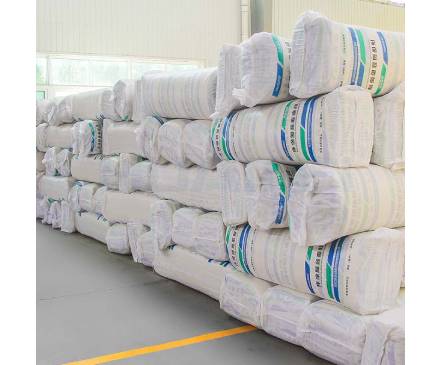With the increasing requirements for environmental protection in buildings, Glass Wool has become a hot insulation material. The issue of environmental protection has become the most concerned issue of people in the world today. Global warming and the accumulation of garbage have greatly affected the environment of the earth. So the concept of green building was born. Green building refers to a comprehensive environmentally friendly building in terms of construction materials, construction process, and even waste disposal. It is a major trend in construction and a favorable factor for environmental protection. Here, the application of building insulation can save energy loss during heating and cooling of buildings, and the recycling of materials is also simpler and more convenient. The material of glass wool insulation layer is taken from nature and has less pollution to the environment, so it is a favorite insulation material for everyone.
So what are the excellent characteristics of glass wool insulation?
1. Insulation performance: The production of glass wool first imitates glass wool into fibers through a centrifuge, and then produces a wool felt-like product through the processes of sedimentation, curing and cutting. The air holes in the middle of the glass fiber form a natural air layer, which enhances the thermal insulation of the glass itself. It is a very good insulation material.
2. Sound insulation performance: When the sound passes through the glass wool, the small vibration of the fiber converts the sound energy into heat energy, which further reduces the sound transmission.
3. Fire resistance: Because the composition of glass itself is like crystal, it is a relatively high temperature resistant material. The maximum use temperature can reach 250 ℃, suitable for residential use, more fireproof.
Types and applications of glass wool

Glass Wool
1. Glass Wool Roll: products are widely used in factories, warehouses, freezer rooms, gymnasiums, exhibition centers, breeding and planting insulation sheds; steel structure buildings and various indoor playgrounds.
2. Glass wool board: The glass wool board is divided into two categories: no veneer and composite veneer. Products are widely used in industries, residential building exterior wall insulation systems, and air conditioning energy saving.
3. Glass wool tube: This product is ultra-fine glass wool added with resin adhesive to heat and solidify into a tubular insulation material. The surface can be pasted with aluminum foil. It has the characteristics of moisture and radiation protection. Insulation and cold preservation of pipelines such as heat and civil heating.
4. Glass Wool Batts: glass wool sheet felt with high performance requirements, used in the wall and roof system of conjoined buildings, unit residences, office buildings, public buildings, etc., not only can it provide exceptional indoor comfort, its excellence The energy-saving and noise-reduction effect has also been affirmed by the market. The most important thing is that the construction and installation are convenient and fast.
5. Reinforced foil veneer felt: In order to better meet the special requirements of customers and solve the problems of moisture resistance, sound absorption, corrosion resistance, and aesthetics, glass wool products can be processed into a variety of veneer products, such as sandwich mesh Aluminum foil veneer, flame retardant pure aluminum aluminum foil veneer products, flame retardant white polypropylene veneer, flame retardant triple composite veneer, black glass fiber veneer and other products. And, the veneer itself has excellent characteristics such as rupture resistance, high tensile strength, beautiful appearance, simple construction and so on.
With the development of new types of glass wool, recently popular formaldehyde-free and acrylic-free glass wool, this glass wool uses new environmentally friendly glass wool curing agent, so that the produced glass wool does not contain formaldehyde or even acrylic binders. The free formaldehyde molecules in the product are gone, making it more environmentally friendly and healthy.
评论
发表评论